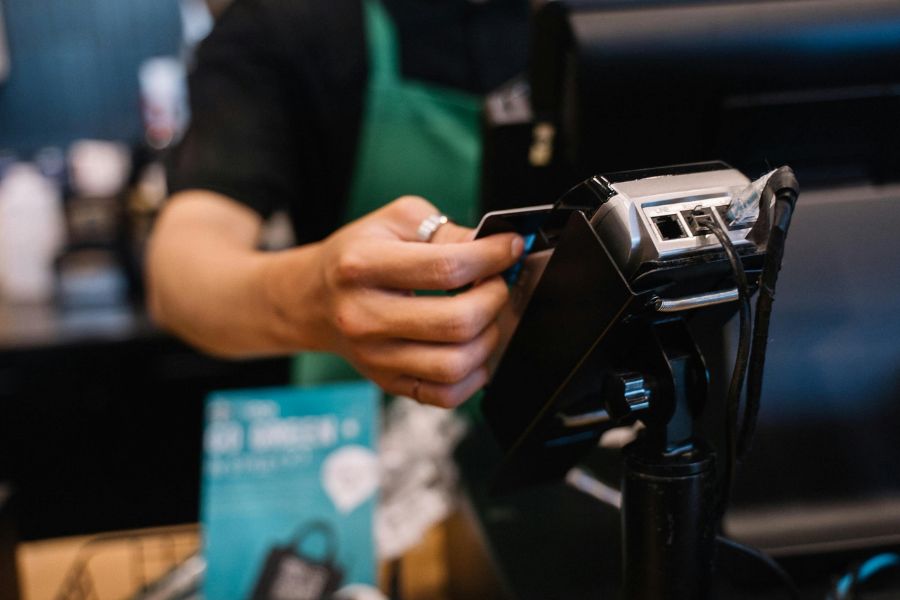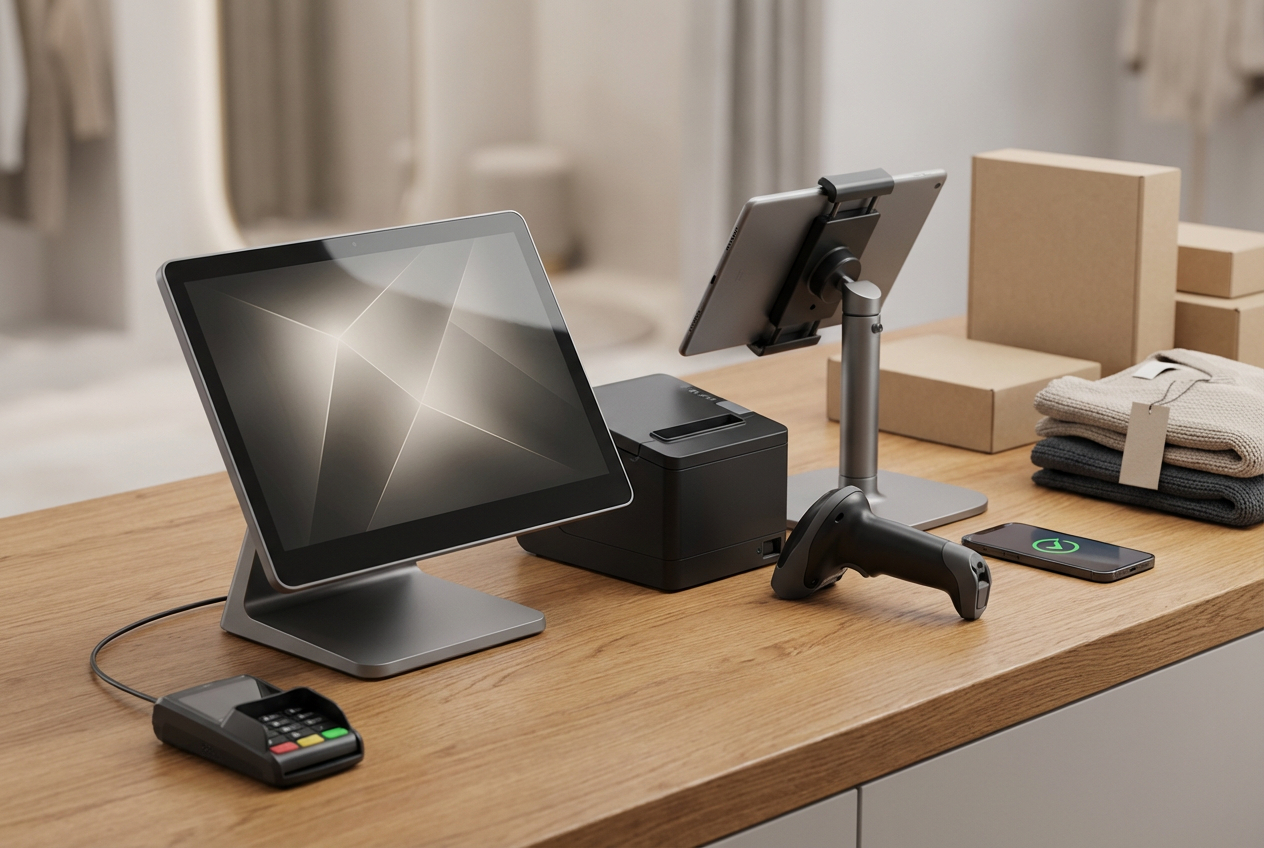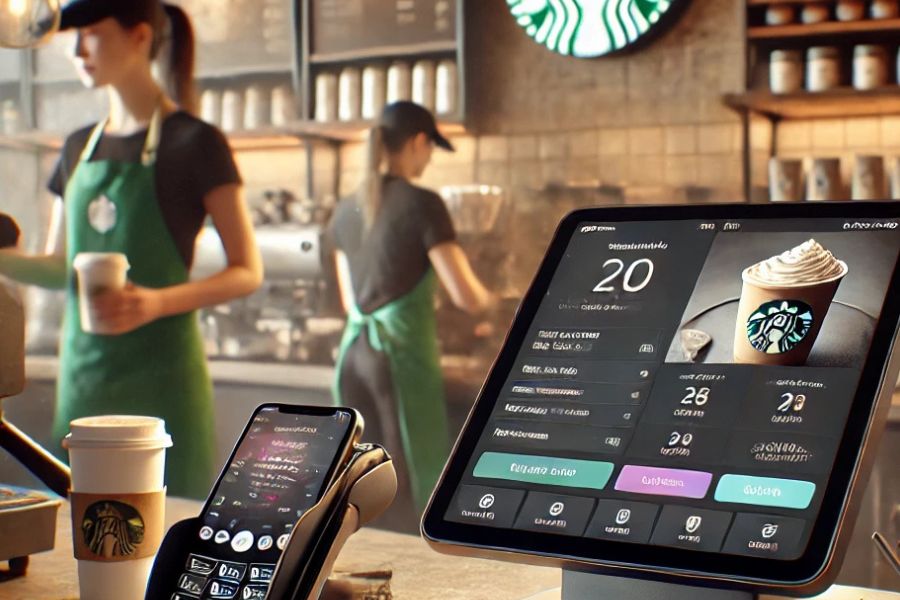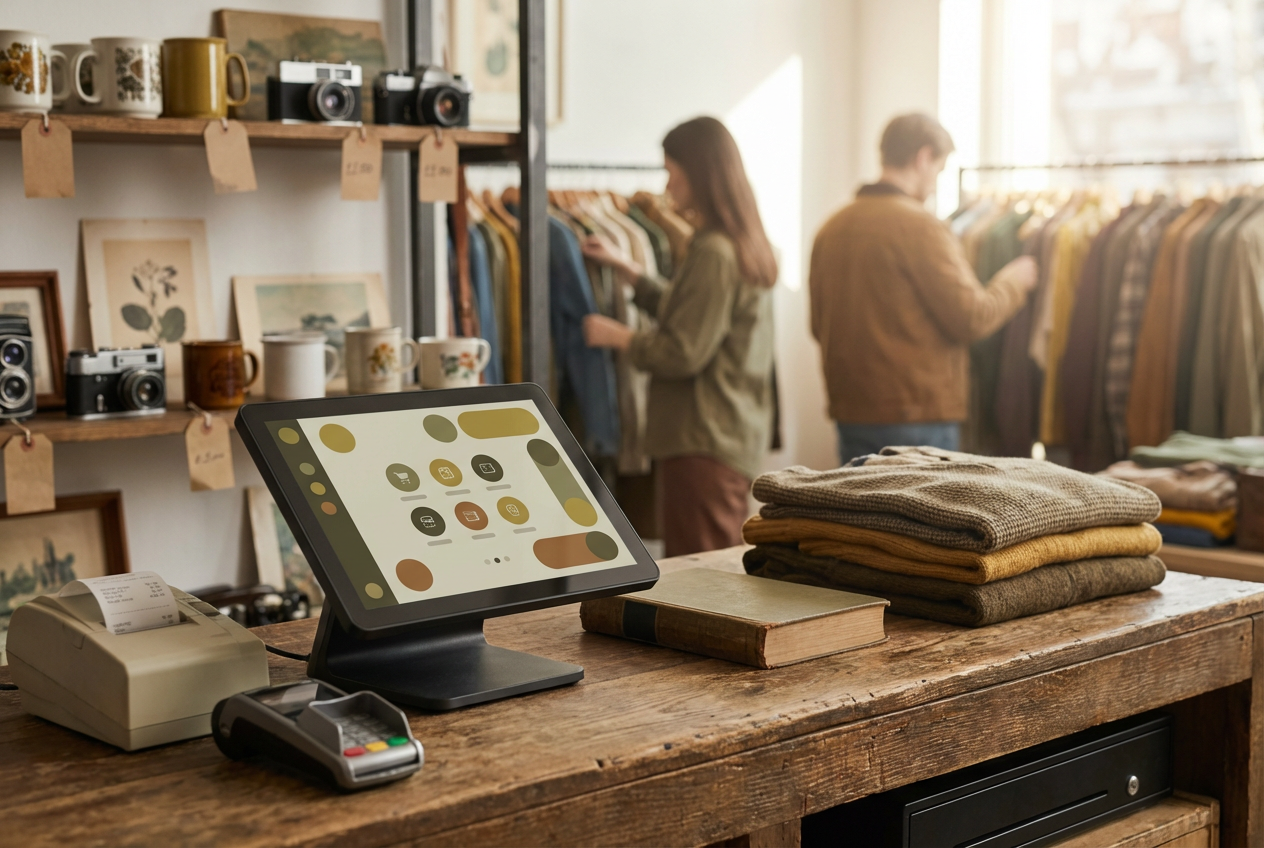According to recent industry data, businesses that integrate enterprise resource planning (ERP) systems like SAP with their retail POS systems report up to 30% improvement in operational efficiency and 25% faster decision-making cycles. This digital synergy is transforming how enterprises manage data, streamline processes, and deliver a more personalized customer experience across every channel. In this article, ConnectPOS will explore what SAP retail POS integration is, its core benefits, technical approaches, real-world use cases, and best practices for implementation.
Highlight:
- Integrating SAP with retail POS systems significantly boosts enterprise performance, improving operational efficiency by up to 30% and accelerating decision-making by 25%.
- This powerful synergy enables real-time data flow, seamless omnichannel experiences, centralized inventory control, and AI-driven insights, transforming how modern retailers operate.
What is SAP – Retail POS Integration?
SAP – retail POS integration refers to the synchronization of enterprise resource planning (ERP) systems like SAP with POS software used in retail stores. This integration enables data, including sales, customer profiles, inventory, pricing, and promotions, to flow seamlessly between the back-end system (SAP) and the front-end POS.
What is SAP?
SAP stands for Systems, Applications, and Products in Data Processing. It is one of the world’s leading ERP solutions used by enterprises for managing business operations, including finance, procurement, logistics, and human resources. SAP’s modular nature enables it to support complex workflows, handle massive datasets, and provide real-time analytics, all of which are vital for large retail chains.
SAP empowers enterprises with:
- Centralized data management
- Standardized business processes
- Real-time reporting
- Global scalability
- Secure and compliant frameworks
However, on its own, SAP isn’t tailored for direct customer-facing retail operations. That’s where POS systems come in.
Why can’t businesses just use their SAP?
While SAP ERP is powerful, it lacks the real-time responsiveness and retail-specific features needed at the point of sale:
- Customer-facing limitations: SAP doesn’t offer the intuitive, user-friendly interface retail staff need for quick checkout.
- Delayed data updates: Without integration, sales and inventory data may sync in batches instead of in real time.
- Lack of omnichannel support: SAP alone doesn’t provide built-in tools for handling in-store, mobile, and online sales uniformly.
- Reduced agility: Rapid promotions, discounts, and loyalty programs are hard to manage directly in SAP without heavy customization.
Benefits of SAP – Retail POS Integration
Integrating SAP with retail POS systems empowers businesses to optimize operations, strengthen customer experiences, and make real-time, data-driven decisions across all retail functions.
- Unified Customer Experience Across Touchpoints: With SAP retail POS integration, customers enjoy a consistent shopping experience whether they’re purchasing online, in-store, or through mobile. Data is synced across channels, enabling features such as unified promotions, loyalty programs, and personalized recommendations, creating a seamless omnichannel experience.
- Centralized Inventory & Supply Chain Visibility: Retailers gain end-to-end visibility into inventory levels, supply chain movements, and product availability. SAP’s powerful ERP capabilities allow real-time tracking of stock across locations, reducing stockouts, overstocking, and manual errors in replenishment.
- Faster Checkout and Accurate Pricing: Synchronizing POS systems with SAP pricing and promotion engines, retailers ensure accurate, dynamic pricing at checkout. Integration minimizes delays, decreases manual entry, and speeds up the transaction process, improving overall customer satisfaction.
- Advanced Reporting and Analytics: SAP’s analytics tools deliver actionable insights when connected to retail POS data. Retailers can track sales performance, customer behaviors, and operational trends, enabling data-driven decisions and long-term strategic planning.
- Compliance, Security & Scalability: Integration guarantees compliance with financial, tax, and data protection regulations. SAP’s robust infrastructure supports secure transactions and enables retail operations to scale effortlessly, whether expanding regionally or globally.
Challenges in SAP Retail POS Integration & How to Overcome Them
SAP retail POS integration brings immense benefits, but the road to seamless deployment isn’t without hurdles. Issues like data mapping, user training, and budget management can make or break implementation success.
Data migration and mapping complexities
Migrating data from legacy systems into SAP and mapping it accurately to the POS structure is often the most technically demanding part. Nearly 70% of SAP integration failures are attributed to poor data quality or mismatched schemas. Inaccurate product, pricing, or customer data can cause disruptions at the point of sale.
Solution: Cleanse and normalize data before migration. Use automated tools for mapping and validation. Run parallel testing cycles to ensure consistency across systems.
►►► Optimal solution set for businesses: Multi store POS, Next-gen POS, Inventory Management Software (MSI), Self Service, Automation, Backorders
Change management and user training
A major roadblock in SAP POS projects is user resistance and lack of training, which can delay adoption and lower ROI. According to LinkedIn Pulse, poor change management is a top reason for underperforming SAP projects.
Solution: Involve stakeholders early, provide hands-on training, and create role-specific onboarding programs. Use internal champions to facilitate peer learning and feedback loops during rollout.
Cost and implementation timeline
Implementing SAP-POS integration requires upfront investment in licensing, customization, and consulting, often stretching timelines and budgets. For example, mid-sized businesses may spend anywhere from $500,000 to $1.5 million over a 6–18 month period, depending on scope and complexity.
Solution: Use phased deployment to minimize disruptions and spread out costs. Clearly define scope and deliverables. Leverage pre-built connectors and integration accelerators to reduce development time and expense.
Recommended strategies for a smooth SAP – Retail POS Integration deployment
Deploying SAP – Retail POS integration is a complex process that requires more than just technical implementation, it demands a strategic, well-planned approach to avoid pitfalls and maximize ROI.
Choose Experienced Integration Partners with SAP Retail Domain Expertise
Collaborating with a partner who understands both SAP and retail POS systems is essential. They can navigate industry-specific challenges, recommend best practices, and help you avoid common integration pitfalls. Their experience ensures smoother project execution and better alignment with retail workflows.
Define Clear KPIs and ROI Metrics Before Beginning the Project
Set measurable goals to track performance, such as system uptime, transaction speed, and customer satisfaction. Defining KPIs early keeps all stakeholders aligned and helps justify the investment by linking integration outcomes to business value.
Conduct Pre-Go-Live Audits to Ensure Systems Are Correctly Integrated
Thorough testing and auditing before launch can prevent critical issues from surfacing in real-time operations. Verify data accuracy, pricing sync, inventory alignment, and end-to-end system behavior to ensure a stable go-live.
Invest in Post-Deployment Support and Continuous User Training
Even after the integration is complete, challenges can arise. Ongoing technical support helps resolve bugs quickly, while continuous training equips staff to use the system effectively, boosting productivity and adoption.
Future Trends: AI, Cloud & Omnichannel in SAP-POS Ecosystem
As retail continues to evolve, the integration of SAP and POS systems is being reshaped by cutting-edge technologies like AI, cloud computing, and omnichannel strategies.
Rise of AI in customer analytics and personalized selling
AI is revolutionizing retail by enabling real-time, hyper-personalized customer engagement and operational intelligence. According to SAP, retailers that embed AI into their operations see up to 40% improvement in marketing efficiency and a 20% increase in customer satisfaction through predictive analytics and intelligent automation.
Through SAP’s AI capabilities integrated with POS data, businesses can:
- Analyze historical and real-time customer data to predict purchasing behavior
- Automate product recommendations based on previous purchases and preferences
- Identify churn risks and tailor promotions to retain customers
- Optimize inventory planning and pricing dynamically
Cloud-native SAP and POS platforms for agility
Cloud computing continues to reshape how retailers run operations. According to Gartner, public cloud spending in retail is projected to surpass $36 billion by 2025, signaling a strong shift toward scalable, low-maintenance systems.
SAP’s move to cloud-native solutions – such as SAP S/4HANA Cloud – lets retailers connect POS systems across multiple locations, regions, and sales channels without heavy infrastructure. Key advantages include:
- Faster deployment of updates and new features
- Lower total cost of ownership due to reduced hardware and IT staffing needs
- 24/7 real-time data access, enabling remote store management and insights
- Scalability to support seasonal traffic spikes or store expansion
To build on this, retailers are pairing SAP with cloud-based POS solutions like ConnectPOS, which integrates directly with SAP’s enterprise systems. ConnectPOS adds value through:
- Real-time synchronization between front-end transactions and SAP’s back-end
- Omnichannel readiness, supporting both in-store and ecommerce operations
- Centralized inventory visibility across all sales channels
- Mobile POS functionality for flexible selling, from pop-ups to store aisles
- Customizable promotions, loyalty programs, and pricing rules
- Detailed sales and performance reporting accessible from any device
Together, SAP and ConnectPOS provide a connected retail infrastructure that supports growth, improves daily operations, and enhances customer experience across every channel.
Integration enabling seamless omnichannel and unified commerce strategies
Modern consumers expect frictionless shopping experiences across every touchpoint, whether they browse on mobile, buy online, or return in-store. SAP-POS integration is the key to delivering unified commerce, where systems work in harmony to present a consistent, real-time view of inventory, pricing, promotions, and customer data.
According to McKinsey, omnichannel customers spend 30% more than single-channel shoppers. With SAP’s centralized data structure and POS integration, retailers can:
- Offer Buy Online, Pick Up In Store (BOPIS) or curbside pickup seamlessly
- Synchronize promotions across channels and touchpoints
- Provide real-time inventory visibility across warehouses and store locations
- Enable returns and exchanges across any channel without data loss
FAQs: SAP Retail POS Integration
- Is SAP POS integration expensive to implement?
Costs vary based on store count, complexity, and provider. However, platforms like ConnectPOS offer modular pricing, making it more affordable and scalable than full-stack custom integrations.
- Can SAP POS integration work with multiple sales channels?
Yes, SAP POS (Point of Sale) integration is fully capable of supporting multiple sales channels. It seamlessly connects physical retail locations, online stores, and mobile sales platforms, ensuring a unified and real-time view of sales performance and customer data across all touchpoints.
- How long does it take to integrate SAP with POS systems?
The duration of SAP and POS system integration can vary widely, from just a few days to over a year, depending on the project’s complexity, system architecture, and chosen integration approach.
Conclusion
In sum, SAP – retail POS integration is revolutionizing how enterprises operate by unifying backend ERP power with customer-facing retail agility. This impactful pairing transforms everything from inventory management to omnichannel performance, enabling sharper business decisions and delivering exceptional customer experiences.
If you’re seeking a reliable, cloud-native solution to bridge SAP with modern retail demands, ConnectPOS offers the ideal front-end integration. To explore how ConnectPOS can elevate your enterprise retail strategy, contact us today.
►►► Optimal solution set for businesses: Shopify POS, Magento POS, BigCommerce POS, WooCommerce POS, NetSuite POS, E-Commerce POS



